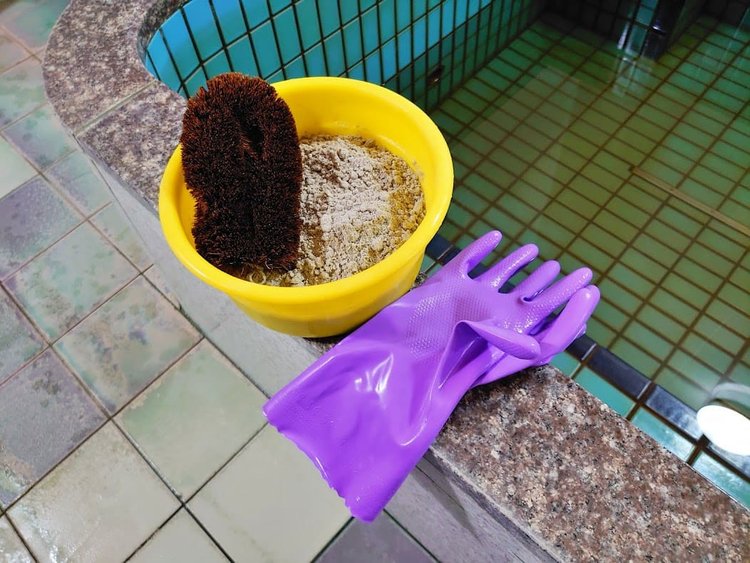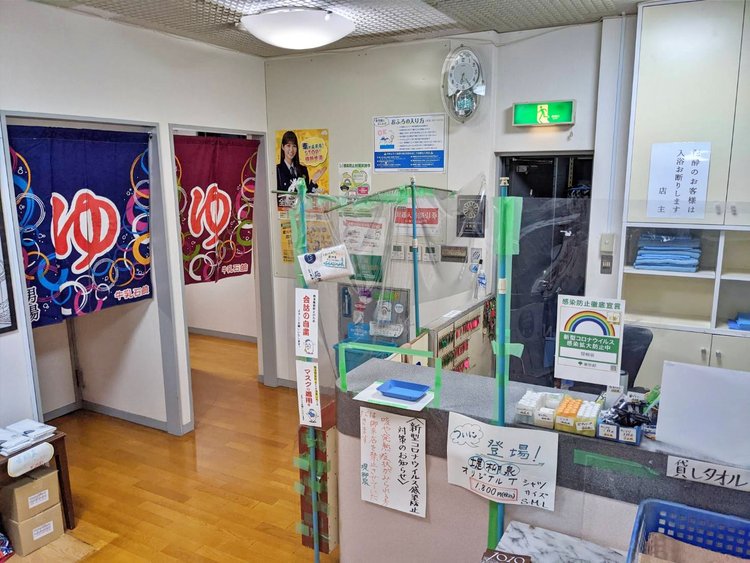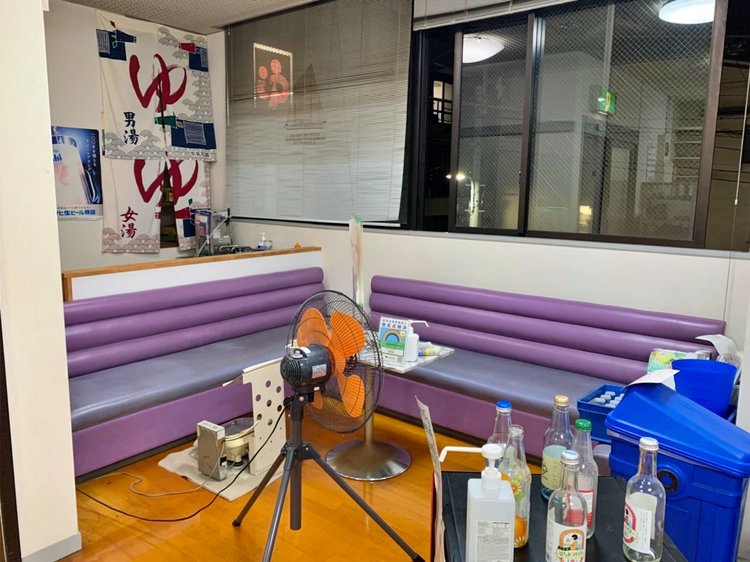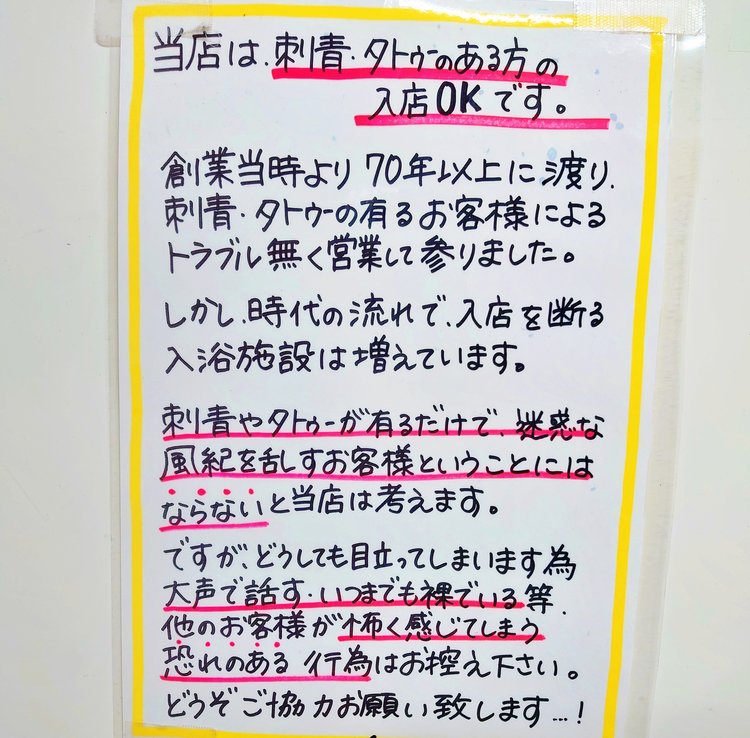The bath and the undressing site are my battlefields! A Sento Jobber's Diary
Follow the Taiwanese Woman Shitamachikizoku into the Japanese Sento
Text/ 下町貴族
Picture provided/ 下町貴族
Sento is a public bath in Japan. My first encounter with sento was in early 2015, the year I first arrived in Japan. I was visiting Tottori prefecture with my friends and took the night bus back to Tokyo. Before we got on the bus, we found a sento to wash off the sweat and sand under the guidance of my friend.
From a Bathing Fanatic to a Sento Jobber?
My first visit to a sento in Tokyo was the day my roommate asked me if I wanted to take a bath at a sento, and then I realized that there was such a gem close to my place. You can sit and wash your body relaxingly, the bath is big and numerous, and there are many kinds of medicinal baths to choose from. The best part is the hot pool that doesn't cool down at all! This trip became the inception of my love for sento.
Taito-ku, where I live, has the highest density of sento in Tokyo, with a total of 22 sentos as of September 2021. Luckily, 8 of them are only about 10 minutes walk from my place. While others fret about their lunch and dinner choices, I fret about which sento to go to for a bath today. I especially like the sento closest to my house for its convenience, water quality, temperature, and variety of baths. I went there for three or four days in a week, so I gradually grew acquainted with the owner and was invited to enter the bandai (番台), the counter of a sento, and officially became a sento part-timer.

The standard kit for sento's part-time workers to sweep: palm brush, business acidic powder cleaner, and gloves against strong acids.
What am I busy with as a sento part-timer?
I am working at two sentos currently. Both of them happen to be close to my home and I visit them quite often. One was invited, and the other I applied for on my own initiative. Since then, I have been "soaking" in the sento every day, seven days a week. My part-time job consists of counter service, in-business service, and cleaning the sento.
What I do at the counter is to sit and welcome patrons, do cash collection, sell milk and drinks, etc. Occasionally, I chat with them about their daily lives. The services during business hours are more complicated. I have to stand or walk around all the time. In addition to greeting customers at the door, I have to juggle between men's and women's baths. I have to wipe away water drops, clean up small trash such as fallen hair, and maintain a clean and tidy undressing area. I occasionally solve a few small problems (such as changing money, getting toys to soothe children, helping to open drinks, etc.).

The bandai is a place to pay admission, and some also offer towel and soap sales for those who want an impromptu sento.

There is a resting area outside the bath where you can take a break after a hot bath.
Basically, the two types of work are not too busy except when there is a special event. For example, the Sento Day is held on October 10 every year. To celebrate this special day for sento, each sento offers a special medicinal bath called "lavender bath" and a limited number of free towels.
In addition to the big events that follow the umbrella organization Tokyo Sento Guild (Tokyo Public Bath Industry Sanitation Association), regional guilds also hold their own events.
For example, in my district, Taito, we hold a Customer Appreciation Day on a day in February or March every year. They also give out free towels with limited patterns (the towels are a must-have for sento, and the limited edition is only given away and not sold)


Tokyo Sento Guild launched 2021 Sento Day limited towels and posters.

The towel for the "Appreciation Day" period is a must-have for many sento fans! The picture shows the limited edition towel in Taito-ku in 2021.
Every event season, the counter at sento is always in full swing! I have to collect fees and give out towels as well as explain to the customers why we are offering free towels. As the number of customers surges, the number of cleanings also increases. At the same time, quite a few of our regular customers would wonder why there were so many new faces today. This is when I need to explain to him, while he is still naked.
However, the hectic schedule above is not as exhausting as the daily sento sweeping.
Imagine how tough it would be if you have to sweep 10 baths, 60 sets of faucets and mirrors, and scrub that huge floor in one hour. My arms were so sore after the first cleaning was done that it was hard to lift them up, and my legs were so stiff due to the constant standing and squatting. As the just-closed bathroom is still hot, you seem to be in a super large sauna.
In winter, it's nice, but in summer it's hell. I often can't tell if it's water or sweat that's falling, and I go home wet and awkward.
By now, I finally get to understand why the sentos are being closed one after another due to the aging of the owners.



The hot steamy bath is a paradise for sento lovers, but it is also a big test for sento jobbers to clean up in summer!
Are people with tattoos denied by the sento? That's not necessarily true!
It is worth mentioning that every time I referred to my part-time job in sento, people around me would always ask the question: Is it true that you can't go in if you have a tattoo?
Those who will ask this question are mostly Taiwanese friends. They are impressed by the rule that tattooed people are not allowed to enter the hot springs, and they think that sento does not welcome tattooed people. In fact, if you look at the relevant laws and regulations in Japan, there is no rule that says "tattooed people are not allowed to enter public baths". The decision to let you in or not is entirely up to the owner of the store.
In the past, people with tattoos were considered to belong to the gang, so store owners banned them for fear of causing unwanted trouble, frightening children, and fearing the stares of others. But as times changed, tattoos has become a mere artistic expression, and more and more people took up tattooing. Although tattooing is still completely banned in places such as high-class hot spring hotels and super sento (entrance starts at 1,000 yen featuring its large-scale sento facilities with restaurants, resting areas, amusement facilities and lodging services, where you can spend a whole day, such as Ooedo Onsen Monogatari Odaiba Tokyo), many traditional sento throughout Japan do not have a ban on tattoos, and the Taito district is almost completely open.
I once also thought that people with tattoos were denied, but several sento owners told me that it wasn't the tattoos that caused trouble, it was the people who didn't follow the rules. Indeed, I found several customers with tattoos all over the back of their bodies, but they just took a bath, took a good soak, and then said, "Great hot water, thanks!" Troublesome? No, they were happy instead!

Are people with tattoos not allowed to enter the sento? That's not necessarily true!This sento notice says that it is okay for those with tattoos to enter!
Sento not only heals, but also has a "social function"!
But what impressed me the most was the "social role" played by the sento. On August 21, 2021, some 6,500 households in Shinjuku and Bunkyo were left without gas for nearly 150 hours due to a ruptured gas line, which affected their daily lives such as cooking and bathing. In response, all of the 19 sentos in Shinjuku and two sentos in Bunkyo opened their doors to people without gas for free until the gas supply was restored.
In the past, we thought that sento was a hub for community exchange, where neighbors came to shower and exchange information every day. In fact, sento has always played the role of "emergency disaster shelter". The so-called emergency disasters include floods, typhoons, earthquakes, etc. In such times, the sento, with its large space, water source, heat source, and clean towels, becomes a place for everyone to settle down. When the 311 East Japan Earthquake occurred in 2011, some of Tokyo's sentos became shelters immediately. In this gas incident, the bathhouses in Shinjuku and Bunkyo are open for free, and bathhouses in each district are always equipped with water and supplies, all of which are to fulfill the social responsibility of the sento owners.
From daily to non-daily and back to daily
Many people describe Japanese sento as "the daily life of local residents", but in modern society, where every household has a bathroom, "going to sento to take a bath" is not a daily life but a "non-daily life". You might find that more than 70% of bathers at sento are regular customers, and most of them are over 60 years old. In their era, sento is indeed a daily routine, so they still retain this habit. But for the younger generation, sento is simply an unknown world, so at one time there was a gap in sento and new customers didn’t show up, which also became one of the reasons for the disappearance of sento.
Fortunately, more and more youths are becoming interested in sento, whether it is for the sento mural art, the buildings, or the purest sense of satisfaction in soaking in the soup. The number of new generations entering the sento market is increasing year by year, including those who run the business themselves, assist in renovations, and promote sento culture. Coupled with a number of sento-themed dramas, sento has once again reached its peak in recent years, and "non-daily" has once again become the "daily life" of some young friends.
The owner of a sento where I used to work asked me why I like sento. I replied that I loved the historical buildings, the mural of the sento, watching the people come in exhausted with anticipation and go out with a fresh smile on their faces, and the efforts of the family that runs the sento. And most of all, of course, bathing is blissful!
 Profile/下町貴族 (Shitamachi Kizoku)
Profile/下町貴族 (Shitamachi Kizoku)
Shitamachi Kizoku, who comes from Taiwan, lives in shitamachi, the traditional downtown in Tokyo. Shitamachi Kizoku is a part-time employee in bathhouses now. She loves shitamachi and bathhouses. If there was no shitamachi, she would set out for Northeast Japan immediately and lean on the Akita. Shitamachi Kizoku’s Japan itinerary covers Japanese castles, castle towns, and bathhouses.
